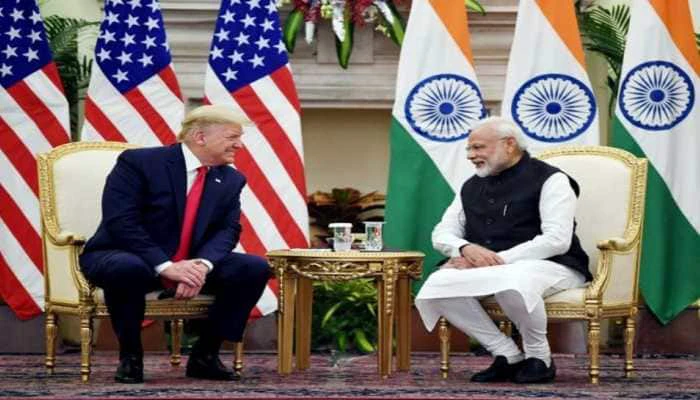Washington: Inside the humming cabin of Air Force One, President Donald Trump leaned back and spoke to reporters as casually as one might comment on the weather.
But his words carried weight, especially for India. With just a couple of days left before an August 1 deadline, he said things between Washington and New Delhi were working out very well. But at the same time warned tariffs as high as 20% to 25% might be on the way.
He did not make the comment out of nowhere. A reporter had asked about whispers from New Delhi that India might be bracing for steep new duties. Trump shrugged off the speculation but made his stance clear. India has charged basically more tariffs than almost any other country over the years. But now I am in charge. And you just cannot do that, he said.
Though there has been no formal communication to India so far and no signed letter like those sent to other nations, the possibility of new tariffs is very much on the table. Despite the tense undertone, Trump called India a good friend.
Back in April, the Trump administration had already slapped a 26% tariff on Indian imports, only to hit the brakes later, describing them as reciprocal measures that could be revisited.
On the Indian side, the mood has been more optimistic. Speaking this past Sunday, Commerce Minister Piyush Goyal said India is negotiating from a position of strength.
India today negotiates from a position of strength, a position of confidence. It is this very confidence that continuously encourages us to make good free trade agreements. Our discussions with the United States are progressing very well, he said.
Foreign Secretary Vikram Misri echoed similar confidence during Prime Minister Narendra Modis recent trip to the United Kingdom. He told the media that India is in regular touch with U.S. officials on the possibility of a Bilateral Trade Agreement (BTA), though those talks are being handled under a separate track.
We are discussing that under a different vertical. All I can say is that our engagement is underway. The contacts are underway, and we will see how that goes, Misri said after the India-UK Free Trade Agreement signing ceremony.
Back on July 14, a senior Indian official said the government was moving ahead with concrete progress on the BTA with Washington, describing the deal as something both nations are committed to finalising under the leadership of Modi and Trump.
Indias goal? A win-win deal. We are moving in terms of a BTA. We are looking at a mutually beneficial deal, the official said.
But trade was not the only card Trump played in the air that day.
He also took a moment to reflect on what he called his role in halting the conflict between India and Pakistan earlier this year. The standoff began after the April 22 terror attacks in Pahalgam, which claimed 26 lives. Indias response, now widely discussed Operation Sindoor, involved targeted precision strikes on nine terror camps in Pakistan and Pakistan-occupied Jammu and Kashmir.
Trump claimed he had helped broker the peace.
Look, India, they are my friends and he is (PM Modi) my friend. And you know they ended the war with Pakistan and by request and I was great and Pakistan did also. We did a lot of great settlements, he said.
India, however, had offered a different version of events. According to New Delhi, it was Pakistans Director General of Military Operations who made the first move and reached out to his Indian counterpart to ask for a ceasefire. Only then did hostilities ease.
Whether Trumps version holds up or not, trade and geopolitics are once again tied together, with India and the United States carefully maneuvering, with each step being closely watched.
